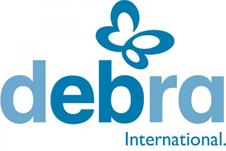
Living with Epidermolysis Bullosa
Epidermolysis bullosa (EB) is a rare, inherited disease in which the skin is very fragile—
so fragile that even just a friendly touch can injure it, leaving a painful blister or open wound.
Living with EB means living each day with serious wounds that must be protected and
encouraged to heal. And for patients and families living with EB, it means limiting how they live in order to
minimize the risk of new wounds. It’s a challenging disease for both patients and caregivers.
Below are various organizations that work to support EB patients and their families and caregivers. This listing is provided as a resource only and does not constitute an endorsement by Chiesi of any particular organization.




